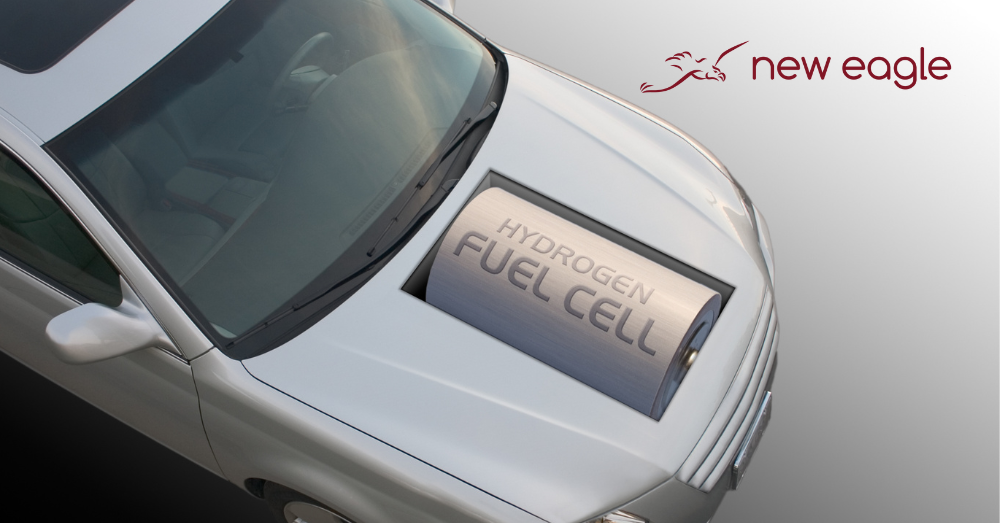As the automotive industry continues to grow beyond the traditional internal combustion engine (ICE), new vehicle-powering technologies are taking their place. Battery electric vehicles (BEVs) get a lot of hype, but there are other green options out there as well, including the hydrogen fuel cell.
This zero-emissions power source is a cutting-edge solution to a perennial problem: how do you power a vehicle with minimal pollution? Astonishingly, the hydrogen fuel cell’s only waste product is water. That’s right: good old H20.
Let’s take a closer look at this fuel cell technology and explore how New Eagle’s controllers can make your next EV project even greener.
What is a hydrogen fuel cell?
A hydrogen fuel cell produces electricity to power a vehicle or other application. There are many benefits to hydrogen fuel, including fast refueling and zero emissions. Thanks to recent advancements made at the Ulsan National Institute of Science and Technology (UNIST) in South Korea, producing green hydrogen is now also easier and much more affordable.
Here’s how it works. Compressed hydrogen gas is fed into the fuel stack, where—instead of being burned like traditional gasoline—it’s separated into positive and negative charges. This creates an electrical current that powers the vehicle. The molecules then rejoin to form water vapor, which is emitted through the exhaust.
What is a fuel cell control unit and what makes a good one?
The fuel cell control unit (FCCU) is the central control unit for a hydrogen fuel cell system. Think of it like the vehicle’s personal electrical power plant, which controls the operation of the overall system as well as individual subsystems, such as supply and storage. It also monitors connected system components to safeguard operation.
When you’re looking for the right FCCU for your project, you want one that’s dynamic and efficient, as well as scalable and easy to integrate. An FCCU that uses fast open- and closed-loop control software provides both dynamic and efficient fuel stack operation. Modular and self-learning software lets you easily integrate into existing E/E architectures or adapt in the future.
Why choose a New Eagle controller?
New Eagle’s control units tick all the boxes for dynamism, efficiency, scalability, and ease of use. Our Raptor software makes development fast and scalable without sacrificing safety.
Raptor’s model-based design in MATLAB Simulink can shave months off your time-to-market thanks to our library of customizable Simulink blocks and automated build tools. Our freshly revamped two-day training program helps your engineers unlock Raptor’s full potential. If you need engineering support beyond training, New Eagle’s application engineering team is on hand with experience assisting customers in cutting-edge proof of concept and production OEM fuel cell projects.
Our electronic control units (ECUs), like the RCM112, are ASIL D and ISO 26262 compliant. ASIL D, or Automotive Safety Integrity Level D, is the highest degree of initial hazard as defined by ISO 26262, meaning they’re subject to the most stringent level of safety measures. We’ve also integrated a hardware security module (HSM) into the FCCU to improve cybersecurity and tuning protection.
Plus, when you collaborate with us, you won’t need to hand over any ownership of your IP to New Eagle. It stays in your hands, where it belongs.
Explore your FCCU options at New Eagle.
Hydrogen fuel cells are the next wave in green technology in the automotive industry thanks to the prospect of zero emissions and fast refueling times. Reach out to our sales team today to see which New Eagle controller is the right one for your green auto project!




